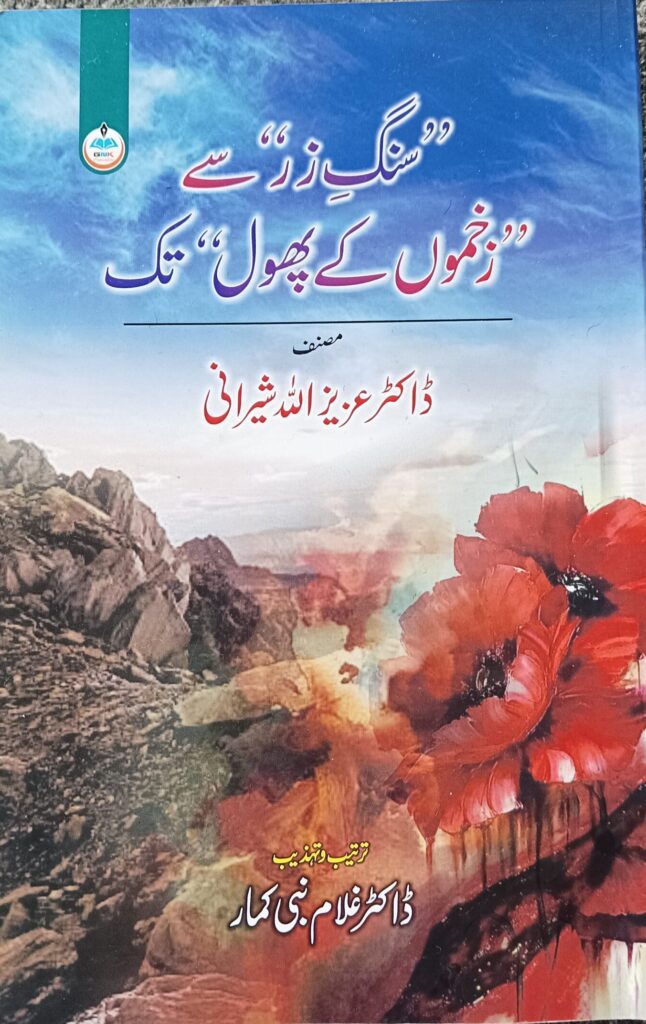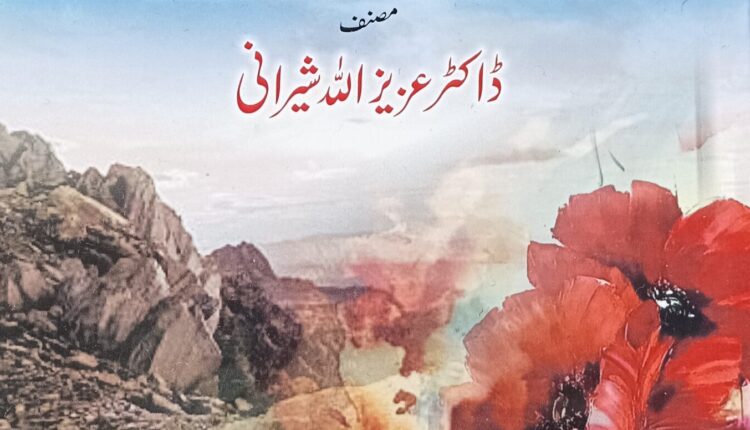By Rayees Ahmad Kumar
Dr. Azizullah Sheerani, a distinguished literary figure from Tonk, Rajasthan, is a name that resonates with depth and diversity in Urdu literature. A man of many talents, Dr. Sheerani has made remarkable contributions across multiple genres — from research and criticism to fiction, translation, travel writing, and book reviews. His career in education, including his tenure as a teacher and later as an educational officer in Rajasthan, further enriched his understanding of human experience, which is reflected in his creative work. Over the years, his literary achievements have been recognized through numerous awards and government grants, and his name today stands as a respected pillar in the world of Urdu letters.
His latest work, Sang-e-Zar Se Zakhmon Ke Phool Tak, published by GNK Publications, Kashmir, is a beautifully presented volume that combines two of his earlier short story collections — Sang-e-Zar (1990), originally published by the Rajasthan Urdu Academy, and Zakhmon Ke Phool Tak (2012). Together, they bring to readers 26 short stories that span decades of Sheerani’s creative evolution. The book’s cover is visually appealing, and the quality of its paper complements its literary worth.
Renowned Kashmiri fiction writer Noor Shah, in his foreword, praises Dr. Sheerani for illuminating his name in the world of Urdu fiction, asserting that while Sheerani has made his mark in several literary genres, it is through fiction that his genius truly shines. His stories, Shah notes, are driven by a powerful and sensitive pen that unflinchingly examines the romantic, social, and moral fabric of our society. Scholars like Dr. Abul Faiz Usmani and Dr. Rifat Akhtar have also acknowledged his contributions, recalling how his early writings in Paasban, a noted Urdu monthly, were widely read and appreciated during his student days — an early indication of the writer he was destined to become.
The opening story, Sang Reze, unfolds the tender tale of Arshi and Azar — two young souls bound by emotion and desire. In it, Sheerani captures the subtle interplay of love, longing, and destiny, revealing his command over narrative depth and emotional resonance. Ajnabi Ajnabi centers around a nurse who selflessly supports her household yet lives a lonely, loveless life after her dreams of marrying her beloved Adnan are crushed by familial manipulation. The story poignantly reflects the quiet tragedies faced by women caught between duty and desire.
Masoom Siski delves into the grim realities of poverty and social prejudice. Through the eyes of young characters forced to work in factories instead of attending school, Sheerani exposes the cruelty of economic hardship and conservative mindsets that deny individuals the right to love or choose their own partners. Aaj Ki Salma explores the fickleness of human relationships and the illusions of love, depicting how poverty and social status often dictate the success or failure of romantic aspirations.
In Kotahiyan, the author targets the greed and hypocrisy of those who view marriage as a commercial arrangement, valuing dowry over virtue. Likewise, Dhalan tells the story of Neelam, a lonely woman whose yearning for companionship turns into a philosophical reflection on life and solitude — she befriends the sun and the moon, who unlike men, never deceive.
The story Faisla is a courtroom drama revolving around a woman seeking divorce, highlighting the moral complexities and emotional dilemmas that accompany the pursuit of justice. In Maqtool Kaun, Sheerani confronts the absurdity of violence in conflict zones, portraying a world where both killer and victim are trapped in a senseless cycle of bloodshed, neither understanding the reasons behind their tragedy. Ye Jung Kab Khatam Hogi expands this theme, offering a heartbreaking depiction of the destruction caused by wars — broken homes, widowed women, orphaned children, and the erasure of hope from entire generations.
Darpok Lamhein captures the tension and fear that define life amid chaos and corruption, where uncertainty becomes the norm and betrayal is commonplace. The title story, Zakhmon Ke Phool, is perhaps the most emotionally powerful in the collection. It tells of a couple who lose three children within ten years of marriage, a tragedy that drains their spirit and leaves readers in tears. The pain of motherhood denied and parenthood shattered is articulated with rare tenderness and authenticity.
In Farar, Sheerani turns to the psychology of love and betrayal, exploring the story of Shamas and Shama — a relationship built on illusion and deceit. Similarly, Thokar reflects on misplaced trust and unfulfilled affection between Faheem and Nargis, where friendship and love collide, leaving behind regret and guilt.
Bhola Kishan takes readers into the life of an illiterate man who realizes, late in life, the power of education. His struggle to read and write becomes a metaphor for human aspiration and self-reinvention. In Rang Chhodti Hina, Sheerani portrays the decay of familial bonds under the weight of suspicion and misunderstanding, revealing how mistrust can destroy relationships within the same household.

What makes Dr. Azizullah Sheerani’s work stand out is his ability to transform everyday experiences into emotionally charged narratives. His stories blend realism with introspection, illuminating both the outer and inner worlds of his characters. He writes with empathy but without sentimentality, ensuring that each story resonates with moral and emotional truth. His women characters are often the most memorable — resilient yet vulnerable, shaped by their social circumstances but never entirely defeated by them.
After going through the stories in Sang-e-Zar Se Zakhmon Ke Phool Tak, one can say with conviction that Dr. Azizullah Sheerani stands among the distinguished fiction writers of contemporary Urdu literature. He knows not only how to craft a story but also how to give it life, rhythm, and purpose. His fiction reflects the pulse of the society he writes about — its pains, passions, hypocrisies, and hopes — making this collection a must-read for anyone who values meaningful and thought-provoking storytelling in Urdu.
The views expressed in this article are solely those of the author and do not necessarily reflect the opinions or views of this newspaper

